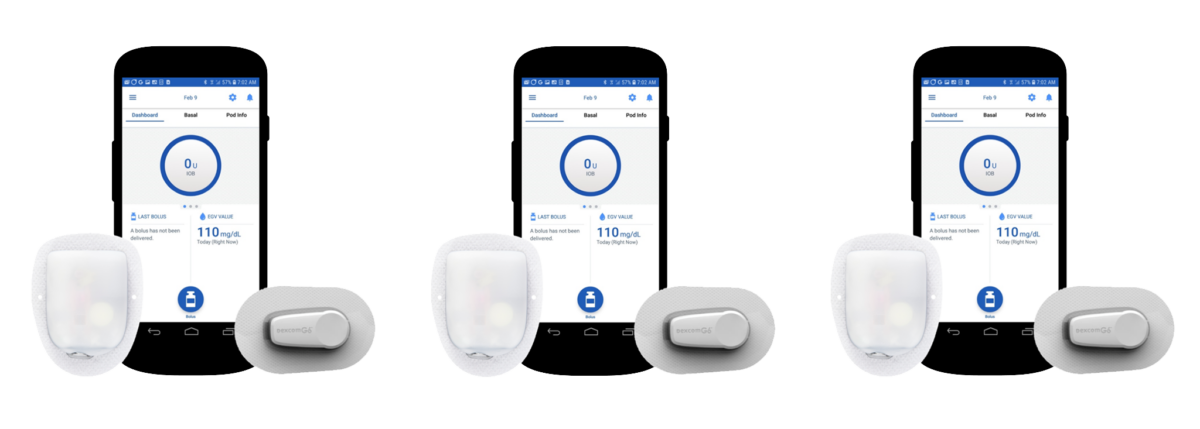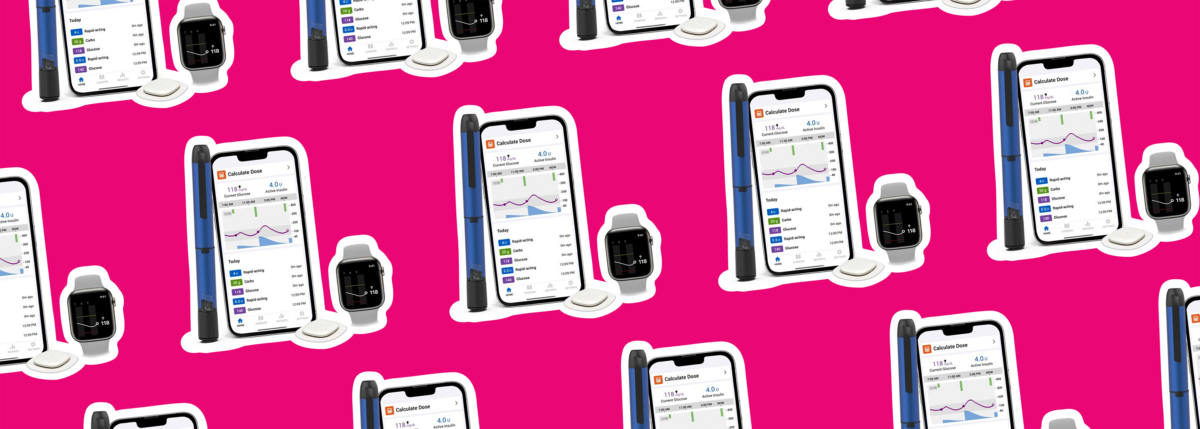Ready-To-Use Glucagon Rescue Pen
Written by: Greg Brown
5 minute read
August 14, 2018
Editor’s Note: on October 23, 2018, the FDA announced the acceptance of the new drug application for review. Beyond Type 1 will continue to update this post as updates in the approval process become available.
Xeris Pharmaceuticals announced this week that the company has filed an NDA (new drug application) to the U.S. Food and Drug Administration (FDA) for its Glucagon Rescue Pen. If and when the pen is approved, it will be the first ready-to-use autoinjector of life saving glucagon to treat severe low blood sugar (hypoglycemia).
The Glucagon Rescue Pen is stable at room temperature and can be administered without any preparation or reconstitution of ingredients. These improvements in ease of use make this life-saving tool more easily administered by a range of people with minimal training.
Current glucagon formulations require the user to mix a liquid and powder in a syringe before injection. Read more about the process and make sure you’re prepared to administer glucagon here.
When it initially began clinical testing several years ago, the Xeris G-Pen was immediately dubbed the next big thing in glucagon treatment. And rightfully so. Both patients and the market have long been awaiting a quick and easy glucagon applicator to treat hypoglycemia and hypoglycemic episodes.
The Chicago-based company recently reported clinical trial data from two phase 3 studies at the American Diabetes Association’s (ADA) Scientific Sessions earlier this summer. Now, the G-Pen is nearing FDA approval and widespread market availability.
“If our NDA is approved in our expected timeframe,” said Paul R. Edick, chairman and chief executive officer of Xeris Pharmaceuticals, “we believe we will have the first ready-to-use, room-temperature stable liquid glucagon formulation that can be administered without any preparation or reconstitution.”
With that in mind, we wanted to take a few minutes to explore what the G-Pen does, how it manages to do it and just when those with type 1 diabetes (T1D) might be able to get their hands on one in the near future.
Glucagon is a metabolic hormone secreted by the pancreas. It raises blood glucose levels (BGLs) by forcing the liver to rapidly convert glycogen (the stored form of glucose) into glucose, which is then released into the bloodstream. The hormone, when taken medicinally, is in essence a fast-acting treatment for insulin coma or insulin reactions occurring from very low blood sugar.
In short, the pen seeks to stem emergencies and quickly avoid a common diabetic nightmare for many: sudden, dangerous lows.
What’s truly novel about the G-Pen is its ease of use.
For years Eli Lilly and Novo Nordisk have had the pharmaceutical glucagon market effectively cornered with Lilly’s Glucagon for Injection product and Nordisk’s GlucaGen HypoKit. And while there is little doubt the efficacy of both product, their application and use process is less than ideal for emergency situations.
Eli Lilly’s product, for example, takes eight steps to correctly use, according to the company’s website. One has to take the vial of dry powder glucagon and flip a seal off. A needle then needs to be unpackaged. After, a user has to properly inject the contents of the needle (sterile water) into the dry powder. Then the needle must be withdrawn and the vial swirled until a watery mixture is achieved. The same syringe is then used to withdraw the solution and inject into the body. The process is similar for GlucaGen HypoKit, which also relies on a water and powder-based systems that must be mixed
The G-Pen, on the other hand, is essentially a premixed EpiPen for people with diabetes. It takes two steps to use: first you take the cap off, then you press the applicator to your skin for instant delivery through an automatic injector that reacts when it contacts the body. In an emergency, glucagon can save a diabetic’s life. And in an equation where time is key, a ready-to-use, pre-mixed glucagon applicator could make all the difference.
Traditionally, the issue with glucagon is that it needs to be kept in a dry formula. Water degrades the hormone fairly rapidly, hence the packaging of the two elements (the powder and the liquid) separately for reconstitution at the time of intended use. But the G-Pen uses a soluble glucagon that involves no water and is ready for immediate use.
Back in February, Xeris announced that it had completed two phase 3 clinical trials and a human factors usability and reliability study of the G-Pen. According to the company, the human factors study showed 99 percent of participants were able to successfully administer a full dose of glucagon with the G-Pen.
When BGLs bottom out to dangerously low levels, it’s hard enough to think clearly, let alone perform complex tasks that require hand dexterity and multiple steps. All that makes the whole idea of having to reconstitute glucagon from a powder form risky. When you take into account how infrequently some with T1D experience hypoglycemic episodes, the learning curve for proper situational treatment steepens even more.
The usability study effectively proved that Xeris’ glucagon formulation and auto-injector pen did indeed result in a simple two-step use process.
The two phase 3 clinical studies show a similarly positive trend. Earlier this summer, the company presented findings and results from those studies during oral and poster sessions at the ADA’s 78th Scientific Sessions, which were held in Orlando, Florida from June 22 to 26.
The data presentations highlighted efficacy and safety data results in treating severe hypoglycemia in both adults and children with T1D. In the studies, Xeris’ glucagon was tested against the currently marketed glucagon emergency kit from Eli Lilly.
The study conducted among 80 adults found 100 percent of patients treated with the Xeris pen were successfully rescued from insulin-induced hypoglycemia without other rescue therapy. Furthermore, 97.4 percent of people subjects achieved plasma blood glucose levels of at least 3.9 mmol/L70 mg/dL or a 1.1 mmol/L20 mg/dL or more increase in blood sugars within 30 minutes of injection. No significant adverse events were reported.
The pediatric component included 31 patients divided into three age groups (2 to 6 years old, 6 to 12 years old and 12 to 18 years old). As with the adult study, all participants achieved statistically significant increases in blood glucose levels within 30 minutes of administration, gaining a mean 1.4 mmol/L25 mg/dL in BGLs.
“Together, the positive data from multiple studies demonstrate that our ready-to-use glucagon rescue pen has the potential to be a well-tolerated and functionally effective alternative to treat severe hypoglycemia among both adults and children with diabetes,” said Paul R. Edick, chairman and chief executive officer of Xeris Pharmaceuticals. “We look forward to advancing our program with the goal of introducing a valued new emergency intervention for the diabetes community.”
Since glucagon is used in emergency situations to treat severe hypoglycemia, it needs to be intuitive, quick and easy to use. Research and development in glucagon is certainly moving that way—this NDA filing comes just weeks after Lilly’s application to the FDA for the approval of a nasal glucagon.
Read more about glucagon + how to administer. It could save a life!

Author
Greg Brown
Greg Brown is a freelance health, finance and environmental writer living in the mountains of western Maine. He has written for Consumer Reports Magazine, Consumer Reports Online, The New York Times and The Chicago Tribune, among other publications. He holds an MFA in Fiction Writing from the University of Iowa Writers’ Workshop and an MS in Journalism from Columbia University.
Related Resources

Already compatible with Dexcom’s G6 and G7 continuous glucose monitors (CGMs), the Omnipod 5 Automated...
Read more

The younger a person is diagnosed with type 2 diabetes, especially those with obesity, the...
Read more

The Oura Ring, which tracks things like sleep, heart rate, and activity, is joining forces...
Read more

